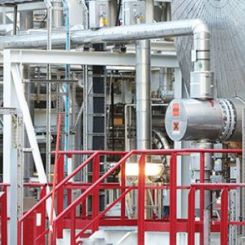
Chemical dosing is not what it used to be. Not long ago, facilities could get by with simple stroke and speed knobs and a patient operator on standby. However, the demands have changed. Accuracy requirements have tightened, systems are more complex and downtime now comes with greater operational costs. In sectors like chemical processing, food and beverage and water treatment, even minor deviations in flow and accuracy can lead to cascading process disruptions that are difficult to resolve.
It should then come as no surprise that mechanical diaphragm metering pumps, the quiet workhorses behind the scenes, are getting smarter, sturdier and more responsive. New technology is solving old problems with surprising results, especially in low-flow, high-precision dosing applications.
This article will take a closer look at how design teams and field technicians are rethinking what these dosing pumps can do and what it means for engineers trying to keep both processes and people happy.
Mechanical diaphragm metering pumps, like those referenced here, hit the sweet spot for many chemical dosing tasks. They are reliable, efficient, accurate and now increasingly “smart.” These pumps are electrically driven and mechanically actuated, which gives them a solid balance of precision, durability and simplicity. While pneumatic and hydraulically actuated models have their place, mechanical versions are a continued mainstay in applications where accuracy and reliability are key.
The Importance of Turndown Ratio
In theory, a chemical metering pump should be able to scale output up or down without losing control accuracy, but in practice, that is often where things fall apart.
When flow requirements dip low during seasonal demand shifts or intermittent feed cycles, older pumps can struggle to respond to these changing requirements. Solenoid designs lose accuracy with stroke length adjustments and may require calibration. That ever-so-slight drift in feed rate adds up over time.
One standout development is a pump that can maintain accuracy across a turndown ratio of 1000:1 at every setpoint, whether running at continuous or intermittent duty, and reliably responding to multiple control signals that tell the pump how and when it operates. This means reliable dosing from full output all the way down to a trickle without any stroke length adjustments. This performance is made possible by motor and drive systems designed to maintain consistent torque even at low speeds, often using closed-loop feedback and advanced drive logic that adjusts in real time to maintain dosing precision, especially in polymer or coagulant applications where accuracy is critical across a wide flow range, down to 1/1000 of full speed.
Managing Off-Gassing Chemicals
Among the many challenging chemicals typically used, sodium hypochlorite consistently ranks as one of the most problematic for operators. Essential for disinfection and oxidation processes, particularly in water and wastewater treatment, it is a chemical widely used due to its effectiveness and availability. It is equally notorious for releasing gas inside the pump head. This off-gassing can lead to vapor lock, loss of prime, inconsistent flow and frequent calls to maintenance, especially in systems not equipped to manage gas-forming fluids. While sodium hypochlorite is a well-known challenge, similar issues arise with other off-gassing chemicals such as hydrogen peroxide and peracetic acid.
This is not a new challenge, but newer metering pumps are meeting it head-on with features like:
- Automated fast-prime ports with solenoid valves that actively vent accumulated gas
- Flow detection sensors that verify dosing is actually happening
- Stay-prime cycles that periodically reestablish prime during downtime and cycle chemical back to the tank, ensuring accurate dosing when the system restarts—without requiring user input
In the past, these features felt like high-end add-ons. Now they are becoming expectations, especially in municipalities and industrial plants where consistency is king. What was once reserved for premium systems is now appearing in more compact and general-purpose metering pumps, with simpler interfaces and more intuitive controls.
Startup Friction
Priming issues are only half the battle. Getting a dosing pump set up and calibrated used to involve a mix of guesswork, trial and error and a veteran technician who knew the system by heart.
Today’s designs are reducing that friction. For example, some systems now offer calibration assist features. Once these features are enabled, the pump runs a user-defined time cycle and displays a pumped volume. The operator inputs the measured volume once the cycle is complete, ensuring accuracy for the full performance range. The pump runs a timed cycle, the operator enters how much fluid was captured and the controller adjusts flow rates automatically.
There are no formulas to memorize, charts to study or trial runs to repeat. No more guessing or saying, “Let’s try that again.” Training is simpler, errors are reduced and commissioning happens faster. That shift alone makes a big difference. Calibration now requires fewer steps thanks to guided setup and clear feedback directly on the pump display.
Smart Integration That Simplifies
A user might expect “smart” features to be flashy, but the ones that stick are the ones that quietly solve headaches. One example: QR codes affixed to the pump that pull up manuals and instructional videos are becoming more common in modern diaphragm metering pump models. While not yet universal, they reflect a growing trend toward user-centric support. Another “smart” feature would be detecting and notifying operators of flow issues before they notice a problem.
Most plants do not need their pumps to send push notifications to their phones. What they do need is integration with supervisory control and data acquisition (SCADA) systems, with multiple alarms that trigger when dosing is interrupted, and the ability to receive multiple 4-20 milliamp (mA) signals or dry contact inputs.
Plant operators are warming up to these features faster than expected, provided they are easy to use and do not overcomplicate what was once a simple task. Of course, utilizing these capabilities still requires thoughtful configuration and a working understanding of control logic and alarm states.
Revisiting the Role of Peristaltic Pumps
Some plant operators still swear by peristaltic designs, and it is for good reason. There are always multiple factors that go into the selection of any pump, and peristaltic technology offers some key advantages in many cases. They handle solids well, they have strong suction lift capabilities and their maintenance is predictable.
A clear differentiation for diaphragm metering pumps is their ability to operate at higher pressures, where tube life in peristaltic pumps is diminished or unattainable. Some peristaltic pumps are rated, at least in theory, to pressures comparable to some diaphragm pumps. This makes frequent tube replacements inevitable at best and can lead to catastrophic tube failure at worst.
It is important to select a pump with guidance from experts who can help in an unbiased way. Diaphragm models continue to improve, offering longer service intervals, broad chemical compatibility, and simple calibration. Peristaltic pumps, meanwhile, provide the convenience of plug-and-play tube exchange technology. Some suppliers now offer both technologies, enabling a thoughtful approach to pump selection for feeding neat, highly concentrated chemicals. The takeaway: It is not about one replacing the other. It is about matching the technology to the process. In many low-to-mid-flow scenarios, diaphragm pumps are gaining ground.
Rethinking Reliability
There is a lot of talk about “smart,” “connected” and “next-gen” pumps, but what operators care about is reliability. They do not want innovation for its own sake—they want a system that stays online, does what it is supposed to and does not require babysitting.
In critical processes such as disinfection and pH control, where the margin of error is strictly monitored and controlled, reliability is everything. The pumps earning trust in the field are doing so with a combination of smarter software, sturdier materials and thoughtful design choices that reduce points of failure.
Improving Reliability & Performance
Metering pumps may seem like a minor piece of equipment until they start causing problems. As engineers and operators face increased workloads, leaner teams and doing more with less, they are expecting more from the tools they rely on.
Modern diaphragm metering pumps are meeting higher operational demands with greater reliability. Instead of reacting to issues, advanced designs now anticipate common failure modes and compensate in real time. These systems offer faster priming, better accuracy, improved pressure stability and enhanced adaptability to fluctuating process conditions. This evolution reflects practical engineering.

